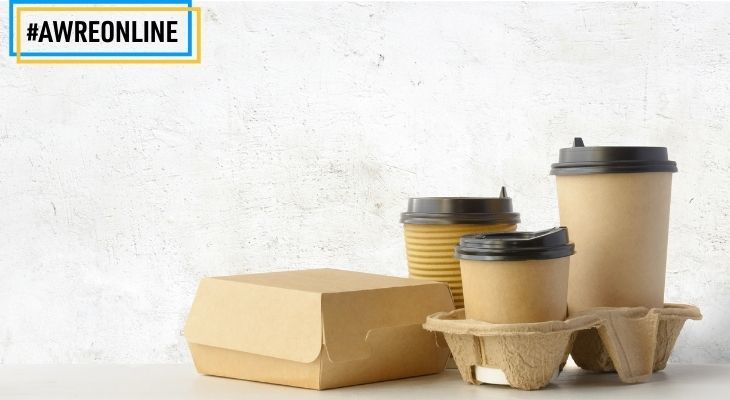5 TAKEAWAYS | Finding the balance between the 2025 Packaging Targets and 2030 Food Waste Targets: From a Packaging Perspective
The 2025 Global and Local Packaging Targets and 2030 Food Waste Targets are fast approaching, what can we do to meet them?
Strict national packaging targets set for 2025 include 100% of Australian packaging being reusable, recyclable or compostable, and problematic/unnecessary single-use plastic packaging being phased out through design, innovation or introduction of alternatives. Food Waste Targets see Australia’s food waste at retail and consumer levels being halved by 2030. These two targets will no doubt have a large effect on each other, and must be balanced accordingly to produce benefits.
“Neither is mutually exclusive, and when we talk about pivoting your business to become more sustainable inside and out, it is critical that you understand both goals and what they really mean to you,” the Australian Institute of Packaging said in a statement.
This session provided insight from industry professionals into key targets in the Australian Waste Industry, and how businesses can increase their overall sustainability.
If you would like a recap of the session check out our 5 takeaways below!
1. Packaging Innovation
Australasian Packaging & Design Awards (PIDA) recognises the design innovators of the year. 2020 was the year that Coca Cola Amatil achieved 100% use of recyclable rPET bottles. With all their SKUs moved into rPET, they are the only company in the world to achieve this.
There are challenges when trying to balance 2025 Packaging Targets and the 2030 Food Waste targets and it does require thinking outside the barriers. Some successful cases have focused on portion control reflecting the changes in household sizes.
There is no doubt that omni-channel and e-commerce has grown exponentially, especially since COVID. This has driven a demand for product protection and the need to eliminate single-use packaging, particularly in secondary and outer casings.
While awards are a great way of rewarding great work, Nerida emphasized that the purpose of the awards is to recognise the good work that is in place. It’s not just about winning it or meeting the criteria, as all steps by the industry will help take us closer to the targets.
2. Self-Adhesive Materials
Michael Dosser took us through the technology developed by Result Group that drives the “Recycle, Reduce and Renew” agenda. The industry was encouraged to research and look into the potential use of wash-off adhesives for each of their brands. This technology is widely used in Europe, with some applications seeing close to 100% wash off.
Digital packaging technology such as QR codes has provided a more direct path to send information straight to the end consumer. With QR codes being widely used since the COVID with restaurant and food outlet check in’s, QR codes have become more familiar with the wider public and is a great tool for the industry. QR codes have been used internationally to drive customer loyalty and provenance, as a few examples discussed.
3. Switching from PVC to PET
Switching over from PVC materials to PET may be much easier than you think. The panel encouraged the industry to reach out to suppliers to get that conversation started. While it may remain challenging for some specific industries such as small goods manufacturing, it’s important that the discussion starts earlier to allow time for the changeover, and it might not be as hard as you think.
4. Prevention over Cure
Over 33% of food produced is wasted worldwide. That equates to 25% of the water used in the agriculture process that is wasted. It is estimated that 1 million PET bottles are purchased every minute worldwide with over 8 million tonnes of plastic entering the ocean each year. This raises the concern to ensure that the path to recycling these bottles, and to both the food waste and a packaging targets, is easy and accessible to all consumers.
Plantic Techologies’ Warwick Armstrong said the company is about preventing the issue rather than curing. “We know that consumers are demanding more sustainable solutions. We’re trying to save food through high barrier tech and sourcing materials from renewable and post-consumer recycling.”
Warwick also highlights that it is impossible to ‘keep everyone happy’, and each company needs to find the right balance between achieving the 2025 packaging targets and the 2030 waste targets.
5. Achieving Dual Objectives
Packaging for the food industry requires a balanced view and the need to design for both the drive and desire, as well as the climate change challenges the world faces. On top of this, companies need to understand the relationship between the customer’s views, cost and fit, as well as the scientific approach to production. There is the need to ensure consumers are educated properly, and that their perceptions of what is best for the environment aligns with reality.
Sealed Air’s international arm has been involved in a program in partnership with Tesco, whereby waste is collected from the stores and is converted into packaging for the food products.
“It’s important to think cradle to grave, of all the impacts all along the supply chain. Knowing the infrastructure and how can we do what we’re doing with less resources”
Panellists
Ralph Moyle FAIP, CPP, Australian Institute of Packaging (AIP)
Nerida Kelton MAIP, Australian Institute of Packaging (AIP)
Alan Adams MAIP, Sealed Air
Michael Dossor MAIP, Result Group
Warwick Armstrong MAIP, Plantic Technologies
Haven’t registered yet? Simply click here to register free online.
-
Subscribe to the latest industry news, insights and AWRE updates.
- Subscribe

